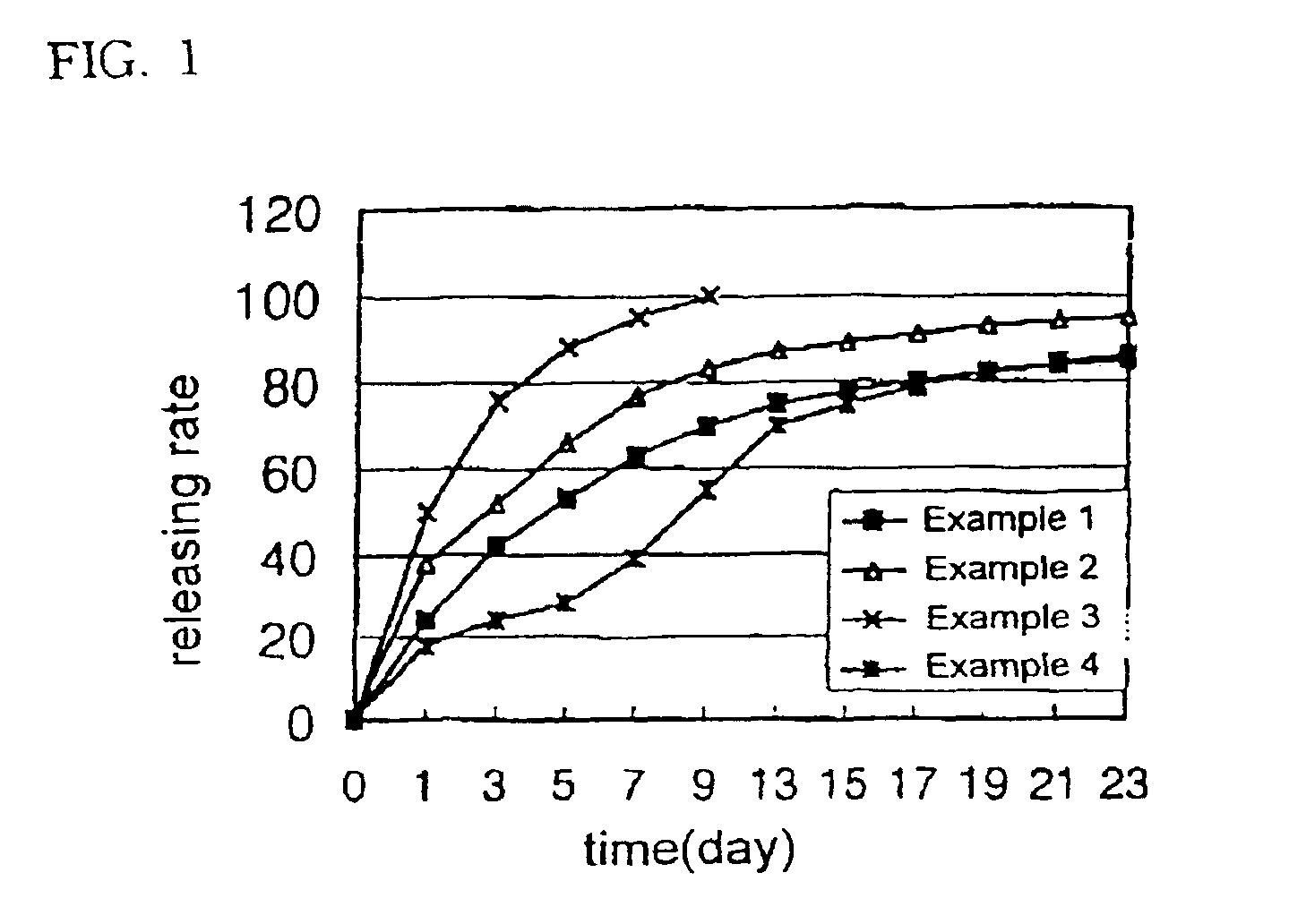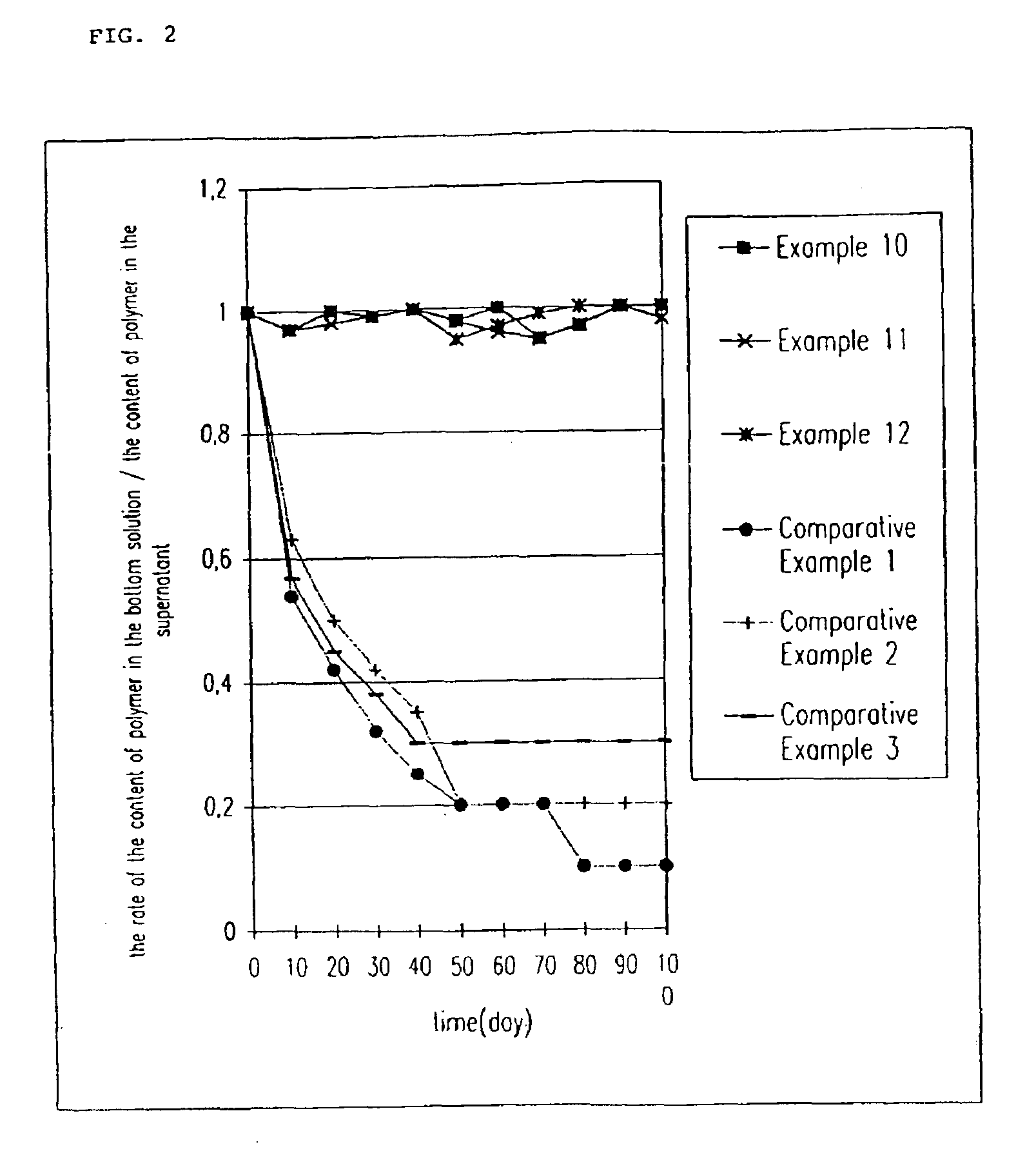Liquid composition of biodegradable block copolymer for drug delivery system and process for the preparation thereof
a biodegradable polymer and liquid composition technology, applied in the direction of powder delivery, peptide/protein ingredients, macromolecule non-active ingredients, etc., can solve the problems of having to be implanted via surgery, requiring special preparation methods, and drugs such as polypeptides and proteins may lose physiological activity after contact with organic solvents, so as to eliminate the possibility of histotoxicity and prevent the hydrolysis of biodegradable polymers.
- Summary
- Abstract
- Description
- Claims
- Application Information
AI Technical Summary
Benefits of technology
Problems solved by technology
Method used
Image
Examples
example 1
[0053]100 mg of human growth hormone, 400 mg of the biodegradable block copolymer (PLA-PEG-1) synthesized above, 450 mg of liquid polyethylene glycol (MW 300) and 50 mg of gelatin were dissolved in 60% aqueous acetic acid solution obtaining a polymer solution. The polymer solution was then sterilized by filtering through a membrane filter having a pore size of 0.22 μm. The organic solvent and water were then removed from the polymer solution by lyophilization leaving a drug-containing liquid polymeric composition. The drug-containing liquid polymeric composition obtained was then filled in a sterilized disposable syringe in the amount of a single dose, which was then sealed.
example 2
[0054]70 mg of human growth hormone, 300 mg of the biodegradable block copolymer (PLDO-PEG-2) synthesized above, 580 mg of dimethoxy polyethylene glycol (MW 300), 20 mg of zinc acetate and 30 mg of polysorbate-20 were dissolved in a 70% aqueous acetic acid solution and the drug-containing liquid polymeric composition was then prepared according to the same procedure as in Example 1.
example 3
[0055]100 mg of porcine growth hormone, 320 mg of the biodegradable block copolymer (PLGA-PEG-2) synthesized above, 550 mg of diacetyl polyethylene glycol (DA-PEG, MW 300), 20 mg of zinc acetate and 10 mg of polysorbate-20 were dissolved in 40% aqueous acetic acid solution and the drug-containing liquid polymeric composition was then prepared according to the same procedure as Example 1.
PUM
| Property | Measurement | Unit |
|---|---|---|
| average molecular weight | aaaaa | aaaaa |
| average molecular weight | aaaaa | aaaaa |
| molecular weight | aaaaa | aaaaa |
Abstract
Description
Claims
Application Information
 Login to View More
Login to View More - R&D
- Intellectual Property
- Life Sciences
- Materials
- Tech Scout
- Unparalleled Data Quality
- Higher Quality Content
- 60% Fewer Hallucinations
Browse by: Latest US Patents, China's latest patents, Technical Efficacy Thesaurus, Application Domain, Technology Topic, Popular Technical Reports.
© 2025 PatSnap. All rights reserved.Legal|Privacy policy|Modern Slavery Act Transparency Statement|Sitemap|About US| Contact US: help@patsnap.com



